Community Law Enforcement
Curbside sales hit a roadblock
June 15, 2011
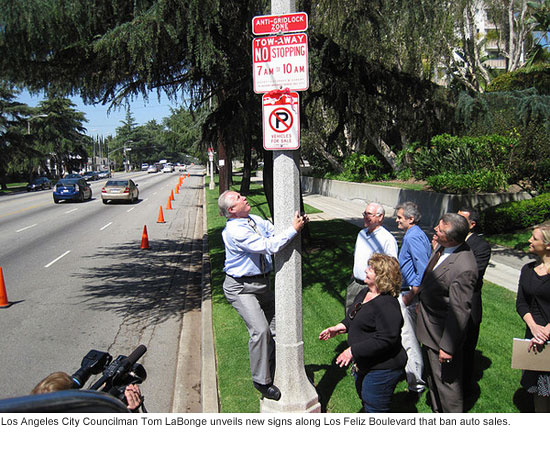 Parked bumper-to-bumper on busy streets throughout Los Angeles County, they seem to materialize out of nowhere, lines of used cars with hand-lettered “for sale” signs in the windows. And while those vehicles may look like a bargain, they can carry a stiff price for the surrounding neighborhoods and beyond.
Parked bumper-to-bumper on busy streets throughout Los Angeles County, they seem to materialize out of nowhere, lines of used cars with hand-lettered “for sale” signs in the windows. And while those vehicles may look like a bargain, they can carry a stiff price for the surrounding neighborhoods and beyond.
A study by the DMV in Los Angeles last year concluded that, among other things, these curbside auto bazaars have led to hazardous traffic jams, increased pollution and rampant consumer fraud, including the sale of stolen cars with fake paperwork. In some cases, individual sellers were found to be illegally hawking multiple cars, turning the public streets into their personal lots.
On Tuesday, armed with that assessment, the Board of Supervisors decided to slam on the brakes, giving initial approval to an ordinance introduced by Supervisor Gloria Molina that would ban vehicle sales on nearly 1,000 specific blocks in the county’s unincorporated areas. A second and final vote is scheduled for next week.
The board’s action comes one month after the City of Los Angeles, led by City Councilman Tom LaBonge, banned auto sales along Los Feliz Boulevard and Franklin Avenue near Griffith Park, where the car trade has long flourished on weekends.
Helping lead the enforcement strategy was lawyer Sari Steel of the County Counsel’s Office, who worked closely with city and county officials, as well as with the DMV and law enforcement. “Their days are numbered,” she says of the outlaw sellers.
For years, both the county and city had laws broadly banning vehicle sales on public streets. But more than a decade ago, Steel says, the city’s measure was successfully challenged in federal court as an unconstitutional infringement on commercial free speech, prompting the county to stop enforcing a similar ordinance. The speech in question: the “for sale” signs.
In recent years, Steel says, a reexamination of state vehicle codes and other court decisions gave way to a new enforcement strategy, one targeting specific streets where it can be determined that a substantial government interest is at stake, such as neighborhood safety. The county’s proposed new ordinance hits sellers hard in the pocketbook; if they’re caught twice in a restricted area within 30 days, their cars are impounded and penalties are imposed.
Steel acknowledges one potential shortcoming to the approach: some determined sellers may simply move from one of the 78 streets listed in the ordinance to set up shop elsewhere. And on Tuesday, that possibility clearly was on Supervisor Don Knabe’s mind.
“My feeling is that you’re either all in or you’re all out,” an irritated Knabe declared. He argued that a sales ban on certain streets would do nothing to solve a problem that he described as endemic in his district. As for the potential unconstitutionality of a countywide prohibition, the supervisor said bluntly: “Why don’t we let somebody sue us and find that out for a fact.”
Knabe also said he was bothered by the cost of putting up enforcement signs in the restricted areas, estimated at $400,000 by the county’s public works department. The board approved a motion by Knabe for a report in 30 days on the ordinance’s costs and approach.
For her part, Steel remains optimistic, noting that new streets can be added to ordinance in the months and years ahead. “No, I’m not satisfied yet but I’m happy that there’s finally progress…Our enforcement is going to make it inconvenient for the sellers no matter where they set up.”
Posted 6/15/11
Camp Gonzales shines in Solar Cup
May 18, 2011
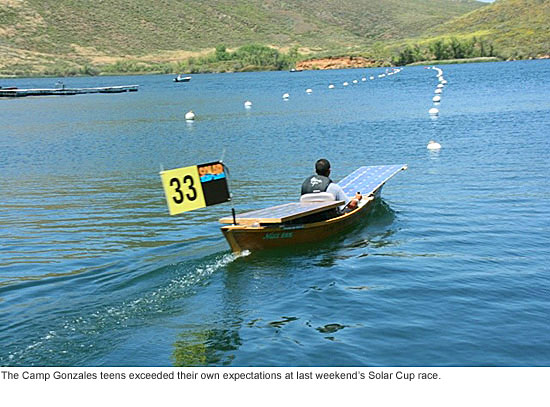 They came. They built. And by the time last weekend’s Ninth Annual Solar Cup boat race was finished, the scrappy teen underdogs from Camp David Gonzales had conquered, too.
They came. They built. And by the time last weekend’s Ninth Annual Solar Cup boat race was finished, the scrappy teen underdogs from Camp David Gonzales had conquered, too.
Profiled here last week as they were preparing to become the first team of incarcerated teenagers ever to enter the scientifically challenging contest, the Camp Gonzales kids, led by teacher Ty Kastendiek of the Los Angeles County Office of Education, ended up with a second-place finish in the sprint in the Rookie Division, and 12th place overall among 40 teams of students, most of whom—like the winners—attended suburban high schools.
Earlier, they took first place in a preliminary round involving the creation of a public service ad on water conservation. The team had spent some seven months building a solar-powered skiff, which they then raced for two days at Lake Skinner near Hemet.
For the teenagers, the glory was less in the race than in completing the project. The group that built the “Miss Ann” knew from the start that they would not be the group that raced it because their sentences at Camp Gonzales, a Los Angeles County probation camp in the hills above Malibu, didn’t coincide with the school year. Most had never been in a boat, let alone built one, and even the most mundane contest rules—attending a mandatory boat-building workshop, for example—posed procedural hurdles.
But as each challenge was met, Kastendiek says, the students gained dignity and maturity. For him, he says, the real triumphs came in random, unguarded moments: Watching an 18-year-old named Richard who had never steered a boat “take full control” and order him to stop talking and help get their boat out of the water. Or listening to the suddenly child-like laughter of his young probationers as they sat around a campfire eating moon pies. Or hearing Christian, one of his liveliest charges, muse that “he liked the endurance race more than the sprint, because the sprint was over too fast and it was beautiful to be out on the lake for a while by himself.”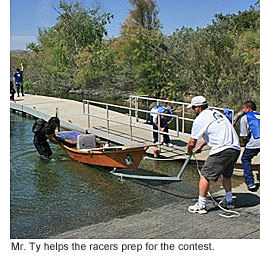
At one point, Kastendiek says, their boat hit a mechanical snag that cost the team the endurance portion of the contest. “It was a repair,” he says, “that normally would have taken 40 minutes.”
But, in what for him was one of the most gratifying moments of the weekend, he says, one of his students, a 16-year-old aspiring electrician named Marco, looked at him and just said, “Mr. Ty, relax—we got this.” In less than 25 minutes, as bystanders shouted advice from the sidelines, the “Miss Ann” was back in the race again.
“The students demonstrated dedication and the ability to solve problems and overcome adversity,” said John R. Mundy, general manager of the Las Virgenes Municipal Water District, which sponsored the probation camp team and congratulated both the students and L.A. County Office of Education.
Kastendiek, who was only able to take three of the more than 20 team members to the actual boat race, says he hopes to enter the Metropolitan Water District-sponsored event again next year. But in any case, he says, the project was deeply gratifying.
“We set a goal,” he says, “we did the journey, and the final outcome was not decided on Sunday, but hopefully in the lives of the young men who had a chance to shine in a new arena, to believe in themselves in a different way and to touch the other participants who got to know them.”
Posted 5/18/11
Probation teens chart a fresh start
May 13, 2011
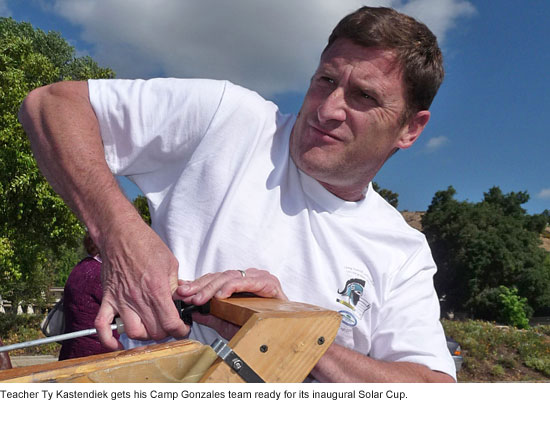 For seven months, Ty Kastendiek’s kids have been readying the Miss Ann for this weekend. Some 20 pairs of young hands have helped build her — hammering, sawing, sanding, varnishing.
For seven months, Ty Kastendiek’s kids have been readying the Miss Ann for this weekend. Some 20 pairs of young hands have helped build her — hammering, sawing, sanding, varnishing.
Fifteen-feet-long, made of wood, she gleams in the sun and all but flies through the water. And to take her out is to know something Kastendiek’s kids appreciate perhaps more than most Southern California boaters: the joy of being free.
Kastendiek—or “Mister Ty”, as his students call him—is a veteran teacher at Camp David Gonzales in the hills above Malibu. Although he has been many things in his life—a purchasing executive, a contractor, an NCAA volleyball player, a Malibu surfer—he has spent the last 18 years teaching history, math and science to incarcerated teens for the Los Angeles County Office of Education. Last summer, he says, he was clicking around on the web when he came across an item about a boat race for high school science students.
“I thought, ‘I like boats’,” he laughed. “I also thought, ‘Yeah, and this would be a long shot.’”
Still, he couldn’t resist taking a closer look at the contest. Sponsored by the Metropolitan Water District, it required participants to build a solar-powered boat, write papers on the science behind it, pull together an environmentally-oriented public service ad and finally race the boat at a grand finale.
It would be tough, Kastendiek realized. Past winners tended to come from affluent suburban school districts, not juvenile lockup. But now, against all odds, he and a team of Gonzales students have cleared every hurdle and then some.
On Saturday and Sunday, they will compete against some 800 students from 40 Southern California high schools in the 9th annual Solar Cup at Lake Skinner in Temecula Valley.
“We’re rookies,” Kastendiek admits, “but I think we’ll make a respectable showing.”
“It’s exciting,” confides one of the teenagers on the team, a soft-spoken 18-year-old from Newhall named Richard who joined the project two months ago, toward the end of a 9-month stint at Gonzales.
 “I’ve never been on a boat like this before,” he said, smiling broadly during a test run this week in Westlake. “I thought I was just going to do my time and go home.”
“I’ve never been on a boat like this before,” he said, smiling broadly during a test run this week in Westlake. “I thought I was just going to do my time and go home.”
Solar Cup coordinator Julie Miller says the contest started as part of the outreach when the MWD was opening the Diamond Valley Lake reservoir in Hemet for recreation. The contest—part regatta, part science project—permits rookie teams to spend up to $4000 on their boats; more veteran teams are limited to $2,500 since, after the first year, they have most of the required parts.
Though only eight boats entered that first year, the Solar Cup is now the largest race of its kind in the nation. Miller says she frequently hears from former contestants. A member of one of the 2007 teams recently wrote to credit the Solar Cup with her decision to become an engineer, says Miller. Two more students who entered as part of a 2008 continuation school team e-mailed to say that the project had inspired them to go on, respectively, to the military and community college.
But this year’s race is the first to feature a team of incarcerated students, and there were some initial hurdles. For one thing, Kastendiek needed a water agency to sponsor the cost of boat building. At the MWD’s suggestion, he called the Las Virgenes Municipal Water District, which stretches from Woodland Hills to Westlake Village.
He wasn’t optimistic. Rules for rookie teams included attendance at two mandatory boat-building workshops; his team couldn’t travel without at least two sworn probation officers to oversee them. Most teams videotaped their public service announcements; his kids’ faces couldn’t appear on film due to court-ordered confidentiality restrictions.
Other teams could make their boats a yearlong class project, but the kids on his team came and went from Gonzales throughout the school year. The teenagers who built and designed the boat in November would not be the same teenagers racing it in May.
But Kastendiek’s call was music to the ears of the Las Virgenes district board members, says public affairs associate Deborah Low.
“We had tried in the past to engage the other high schools in our service area, both public and private, and had never found anyone who wanted to do it,” Low says.
The district’s one request was that the boat be named for the late Ann Dorgelo, a longtime board member from Agoura Hills who had advocated teaching local school children about water conservation.
The boat building began at the start of the school year, with seven or eight students chosen for their interest, their attitude and for their ability to maintain focus and calm, Kastendiek says.
MWD gives each team a basic kit, but the boats vary widely in their look and engineering. The Gonzales boat had to be almost entirely made of wood because the camp doesn’t have a machine shop or welding equipment. Also the design had to be simple—few of the Gonzales kids had ever even been in a boat, let alone built one.
Blueprints were drawn; calculations made. Kastendiek then won permission to take seven or eight kids (with the appropriate supervision) to the official boat-building workshop in early November.
“We built it in about five and a half hours,” he recalls proudly. “Some of those kids had never sawed wood before.”
The team, however, was every bit the revolving door that Kastendiek had feared.
A couple of the boat-builders got into trouble for fighting or defying other teachers and lost their spots. Others were so calmed by the project that they were sent home early for good behavior.
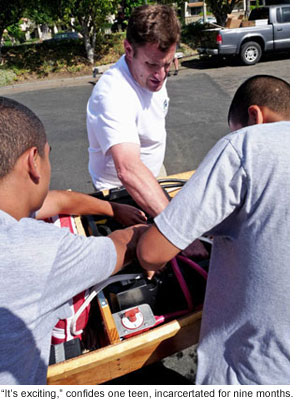 Kastendiek says he tries not to know too much about his students’ back-stories, the better to give them a fresh start. But working with them day in and day out, it was hard to stay at arm’s length from their struggles. One kid who had thrown his heart and soul into the boat lifted his shirt one day to show Kastendiek the scars from five bullet wounds on his torso. “He told me he was glad he’d been locked up,” the teacher remembers, “because if he hadn’t he’d be dead by now.”
Kastendiek says he tries not to know too much about his students’ back-stories, the better to give them a fresh start. But working with them day in and day out, it was hard to stay at arm’s length from their struggles. One kid who had thrown his heart and soul into the boat lifted his shirt one day to show Kastendiek the scars from five bullet wounds on his torso. “He told me he was glad he’d been locked up,” the teacher remembers, “because if he hadn’t he’d be dead by now.”
By the New Year, the first crew of boat-builders was nearly gone from Camp Gonzales. Again, Kastendiek reached out. Several artistic kids came on to do an interactive print brochure that the group settled on as their public service announcement. (“I told them, “Let’s play to our strength—we have some of the best taggers in L.A. County’,” jokes the teacher.)
The laminated, flexagon-style brochure ended up winning a top prize in the rookie category of the public service part of the contest.
More fresh troops completed the boat’s construction. “Some of these kids were almost borderline hyperactive, and you’d put sandpaper in their hands and after a while, you could see their shoulders drop and all of a sudden, a joy there,” Kastendiek remembers. Still other students discovered a sudden affinity for math in the course of building the boat’s solar-powered engine.
Finally, this week, the boat was ready to hit the water.
“Take a deep breath. Take your time,” Kastendiek urged three team members this week at the Westlake Lake test run as reporters, water district board members, probation officers and assorted dignitaries bustled around them. Someone dropped a metal wrench on the battery. A spark flew. “Don’t worry,” Kastendiek repeated. “Try again.”
Down the shore, a competing team from nearby Oak Park High School unloaded their boat, painted a cheery yellow. Kastendiek’s kids watched from a distance in their orange camp-issued shorts and gray t-shirts as the suburban team confided that they were short-staffed because the AP Physics exams were being held that day.
But on the water, the Miss Ann seemed equal to almost any challenge. Christian, an 18-year-old from Long Beach, and Marco, a 16-year-old from Pomona, laughed out loud as she gathered speed.
“It was thrilling! It was so smooth, and the rudder was so simple,” their teammate Richard marveled as he finished his turn as skipper. None had ever steered a boat before that afternoon, said Kastendiek, who was smiling, too, as they loaded the Miss Ann back onto her small trailer.
“I hope we can make a loud statement that these kids have potential,” he says. “And I hope we can come back again next year.”
Posted 5/11/11
Hot pursuit in the toy aisle
April 7, 2011
 Sheriff’s work is no child’s play. But at 1/64th scale, their cars can be.
Sheriff’s work is no child’s play. But at 1/64th scale, their cars can be.
A fleet of “Hot Wheels”- style L.A. County Sheriff’s cars, complete with the trademark star and “A Tradition of Service” slogan, are coming soon to a Wal-Mart near you.
The Los Angeles County Board of Supervisors this week approved a deal between the Sheriff’s Department and Jada Toys Inc. to create the die-cast cars, which will be part of the company’s “Heat” line of law enforcement vehicles.
Under the deal, a Sheriff’s Department training fund will get 5% of gross revenues from the sale of the tiny cars.
“I think they will do very well. Police vehicles have been very popular for the past few years,” said Jason Richman of Jada Toys. He’s not sure why but they seem to be equally popular with kids and adult collectors. And the market is split between realistic cars (like the L.A. County Sheriff’s Department model) and generic or fantasy cars.
“Someone will take a Corvette and make it look like a police car,” Richman said.
He said his company plans an initial run of 15,000 cars. The toys will be produced in China, and Richman hopes to have them in Wal-Mart stores nationwide in time for the holiday season. They’ll retail for $3.99, he said.
Sheriff’s deputy Bill Brauberger said that a realistic depiction of the car was important to the department.
“Our perspective is we wanted it to be similar to what we actually have,” he said. “When your department is as large as ours, it’s good to have kids playing with them. We wanted them to look factually accurate, not bogus.”
The five-year contract can be extended for another five years if all goes well.
It’s not the first time the Sheriff’s Department has gotten into the toy vehicle game. In 2005, supervisors authorized a Hong Kong firm, Sunnyside Ltd., to use the sheriff’s star and slogan for another line of toys. Deputy County Counsel Paul Yoshinaga said the company created 6” replicas of the buses that the department uses to transport inmates. He said the county received about $12,400 from Sunnyside.
Posted 4/7/11
A new tack for old juvenile camps
March 1, 2011
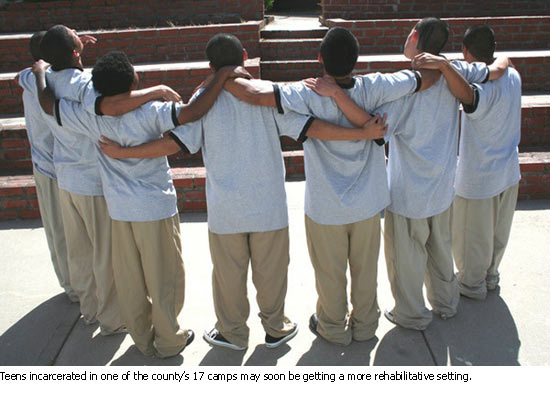 Helping a troubled adolescent isn’t easy. Even more difficult is helping a hundred of them in one room, at the same time. That, however, has been the challenge for the Los Angeles County Department of Probation, which houses some 1,300 young offenders in its juvenile detention camp system.
Helping a troubled adolescent isn’t easy. Even more difficult is helping a hundred of them in one room, at the same time. That, however, has been the challenge for the Los Angeles County Department of Probation, which houses some 1,300 young offenders in its juvenile detention camp system.
Research has shown that the most effective programs take place in small group settings. But the county’s 17 camps, many built decades ago, still feel more like military camps than places where a troubled kid might be rehabilitated—little room for study and introspection, but plenty of space for power struggles and gang fights.
On Tuesday, the Board of Supervisors took a first step toward giving Los Angeles County’s juveniles a more rehabilitative setting. Acting on a motion by Supervisors Zev Yaroslavsky and Don Knabe, the board voted to pursue a $28 million state grant to transform one the county’s 17 camps into a state-of-the-art rehabilitative compound.
“This is a modest attempt to change the dynamics in one camp and the outcomes in one camp, so hopefully we’ll learn a few things and begin to convert other aspects,” Yaroslavsky said. “We’ve got to do something about these camps.”
Although the supervisors are examining which camp to refurbish, the county’s grant application was clear on the goal—to create a more therapeutic model by replacing the old, military-like settings with smaller cottages and more intimate areas for dining and meeting.
“Right now, it’s like a teacher trying to teach a classroom with 50 kids rather than 20,” said the probation department’s chief deputy, Cal Remington. “We’re trying to get these kids to think positively about what we’re trying to teach them. But it’s hard for them to think about anything but each other and status in these big settings.”
Evidence, he said, has repeatedly shown that troubled adolescents are much more likely to change their behavior and attitude when they’re housed as small groups. “A lot of people like the idea of boot camp, but the evidence shows that they don’t change behavior. They just force some kids to say, ‘Yes sir’ and ‘No sir’.”
Jackie Caster, a Los Angeles youth advocate who, like many, has been pushing for some time for improvements to the county’s troubled and outdated juvenile detention program, said changing the layout of the detention camps is crucial.
A year and a half ago, Caster said, she and a number of county officials and academics visited Missouri, where the effectiveness of the juvenile justice system has been held up as an example nationwide. Although comparisons between the rural Midwest and urban Los Angeles are tricky, both she and Remington said that Missouri’s costs and recidivism rates appear to be much lower than L.A.’s.
The secret, Remington said, lies in calmer, more intimate settings that force the juveniles to engage with staff and peers one-on-one. In Missouri, he and others said, the teenagers are put into smaller group homes, given intensive individual and family therapy and academic instruction and taught teamwork and conflict resolution.
Rooms built for small group interaction allow for more counseling and better treatment. The Missouri camps, Caster said, “don’t look like institutions. They have carpets on the floor, pictures on the walls. The kids have bunks and closets. They’re made to feel valued, not just institutionalized.”
The grants are authorized by the state’s 2007 Juvenile Justice Reform Bill, which shifted California’s non-violent juvenile offenders into county programs and facilities. As part of that measure and subsequent legislation, the state authorized some $300 million in lease-revenue construction bonds for the design and construction of new or renovated county facilities for youthful offenders.
Los Angeles County’s proposal is not the largest to have been approved under the program. Alameda County is planning to build a similar 150-bed girls’ camp for $35 million. Still, several supervisors expressed concern that the grants might fall through, given the state’s financial problems. Also the program requires that the county ante up a $2.8 million cash match, plus a 15% contribution of in-kind services such as architectural planning.
Robert J. Takeshta, deputy director of the California Corrections Standards Authority, which administers the program, said that if the county sets the paperwork in motion, it could still decline the grant if the supervisors decided not to go through with the project. The money, he says, would simply go back into the pot to fund another juvenile justice project elsewhere in the state.
Said Supervisor Knabe: “Why leave money on the table when we have the ability to pull the plug if we want to?”
Posted 3/1/11
A young man and a dream die in war
December 15, 2010
At an age when most teens still find it challenging to crawl out of bed in the morning, 17-year-old Matthew Ramsey was driven, a doer. So as he aimed toward an early graduation from high school three years ago, it surprised no one that he also decided to join a friend in the Los Angeles Sheriff Department’s Explorer Program.
What Matthew did not expect to find as member of Explorer Class 79 was his calling. After helping deputies in the Lancaster Sheriff’s Station with a variety of tasks, the Quartz Hill teenager decided he wanted to wear the department’s badge, too, as soon as he turned 21.
In the meantime, he and a buddy made a pact that they’d enlist in the Army to hone their skills and emerge as prime candidates for the Sheriff’s Academy when their military hitch was up.
For Matthew, that tour of duty ended a lifetime too soon.
Shortly after Thanksgiving, while working at an observation post in Afghanistan’s Nangarhar Province near the Pakistani border, Matthew and five of his fellow soldiers were shot and killed by a rogue Afghan Border Police officer that his unit had trusted and worked with for several months. American soldiers killed the gunman seconds later; Al-Qaeda sources claimed he had been their sleeper agent, but that could not be confirmed.
By then, Matthew was married with a 17-month-old son, Zachary. His wife, Mirella, was pregnant with their second child. But Matthew’s death resonated well beyond his grief-stricken family, sending shock waves through his hometown and the close-knit Sheriff’s Department.
“The kids who join the Explorers are generally kind of a notch above,” says Deputy Michael Kuper, who oversees the Explorer Program for the Lancaster station near Matthew’s home. Kuper says Matthew fit the mold, an eager kid who was fully committed to a program that seems anything but glamorous. Explorers assist deputies in non-hazardous law-enforcement situations that include ride-alongs, crowd control, traffic management and community events.
Matthew finished his service with the Sheriff’s Law Enforcement Explorer Program in April, 2008. After turning 18, he left for basic training.
His mother, Melissa, admits she wasn’t happy with his decision to join the Army.
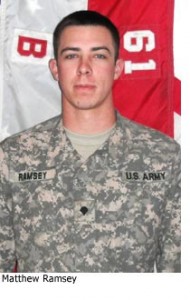 “It’s not something that we wanted,” she says. “I don’t think any parents want them to go, but we couldn’t change his mind.” While Melissa’s father, served in the U.S. Air Force, her son wasn’t raised in a military family and enlistment wasn’t a foregone conclusion. “He was my youngest, and I didn’t want him to leave. I wasn’t ready for him to go.”
“It’s not something that we wanted,” she says. “I don’t think any parents want them to go, but we couldn’t change his mind.” While Melissa’s father, served in the U.S. Air Force, her son wasn’t raised in a military family and enlistment wasn’t a foregone conclusion. “He was my youngest, and I didn’t want him to leave. I wasn’t ready for him to go.”
Still, Melissa says, “I definitely supported him and the choices he made.”
Matthew was eventually assigned to the 101st Airborne Division. In his various deployments and assignments, Matthew earned numerous citations, according to the Army, including the National Defense Service Medal, Afghanistan Campaign Medal, Global War on Terrorism Service Medal, Army Service Ribbon, Overseas Service Ribbon, NATO Medal and Air Assault Badge.
Two more will soon be added posthumously to that list: the Bronze Star and Purple Heart.
“He put 110% into everything he did,” says Melissa, whose son recently told her that he would soon be promoted to sergeant, a particular point of pride for her because of his relatively young age.
Those who knew Matthew in the Sheriff’s Department also share a sense of pride in the young man who impressed them with his sense of responsibility and enthusiasm.
As a Sheriff’s Department military liaison, Lancaster Deputy Mike Ruiz helped organize Matthew’s memorial service last Saturday at Highlands Church Fellowship, where the family worships. More than 1,000 mourners gathered.
Sending a message that life goes on, the family insisted that the church leave in place all its seasonal decorations, including a frosted Christmas tree, twinkling lights and the stage set for an upcoming Christmas musical that allowed barely enough room for all the flowers.
Melissa delivered a poem for her son, and a cousin performed a song. Speakers included the local congressman, Rep. Buck McKeon, and Brigadier General Robert B. Abrams, the commanding general for the Army’s National Training Center at Fort Irwin. Dozens of local Sheriff’s Explorers were also there, as were representatives from the Air Force and Marine Corps.
More than 100 members of the Patriot Guard Riders, a national motorcycle club whose members include former military personnel and retired police officers, helped escort the funeral cortege. A 21-gun salute was fired, taps were sounded and a precisely folded American flag was presented to the family.
Besides his wife, mother and stepfather, Matthew leaves behind an older sister, Meghan; two stepsisters, Corrin and Stephanie, and three nieces. American Security Bank in Lancaster has established the Matthew Ramsey Memorial Fund on behalf of his widow and children. Call (661) 723-2000 for further information.
Posted 12/15/10
More than just the facts, ma’am
December 1, 2010
Where have you gone, Sgt. Friday?
Law enforcement communication, once a bastion of deadpan, just-the-facts accounts, is entering a new era in Los Angeles.
And not a moment too soon for Sheriff’s Captain Mike Parker. His agency, along with the LAPD and some others in the county, is an enthusiastic early adopter of Nixle–a direct communication service that beams official news dispatches instantly by email or cell phone text message.
Originally intended as a mass emergency alert system, Nixle has quickly evolved as well into a way for authorities to pass on information about everything from how to find a bathroom at the Lakers’ victory parade to how to avoid a ticket for parking overnight on the street during the holidays. Detectives with missing persons cases have turned to Nixle to get the word out quickly to thousands of potential witnesses.
And agencies, once dependent on a media middleman to carry their messages, are suddenly speaking directly and instantaneously to the public. In the process, some time-honored conventions of the press release are getting a makeover, with attention-grabbing headlines, colorful quotations and even a little up-close-and-personal storytelling.
“We don’t want to do salacious,” says Parker, who’s leading the charge to train sheriff’s officials in using the new system. But there’s nothing wrong with zeroing in on “What is unique about this? Convince me to open this email.”
“You tell a story,” Parker says. “You don’t have to be a tabloid.”
This week, for example, an item went out from the sheriff’s Century Station under the headline “Crossing Guard Beaten & Robbed of Stop Sign and Whistle in Front of 20 Schoolchildren & Adults. 2 suspects arrested.”
The accompanying narrative told the tale of a plucky crossing guard standing up to two suspects in a black Ford Expedition who were trying to push through her intersection without stopping. “The crossing guard raised her stop sign higher in the air and told the suspects, ‘You have to stop, the children come first.’ “
According to the Nixle account, the suspects responded by swiping her stop sign, grabbing her lanyard and whistle and knocking her to the ground. They were arrested nearby and the crossing guard, who had only minor injuries, went home.
That left Lieutenant Mike Thatcher of Century Sheriff’s Station with the last word–a classic “kicker” quote that would not seem out of place in a news story: “We have never seen anything like this before and hope we never do again.”
The LAPD and the sheriff’s department–which together reach about 80,000 subscribers who’ve signed up for the free service–report that Nixle usage increases during a major news event, like the Crown Fire near Palmdale in August.
Sheriff’s Deputy Bob Boese, who’s helping to train his colleagues on how to take advantage of Nixle, says the system is valuable in conveying both “local, local, local” information and the really big stuff.
“The goal is to get every Los Angeles County resident to sign up for Nixle, so that in the event of a catastrophe, we can provide information directly to their cell phones,” Boese says.
Sheriff’s officials say using Nixle helps make good on Sheriff Lee Baca’s pledge of openness and transparency.
“In addition to transparency, we’re providing a sense of community,” Boese says.
Over at the LAPD, Lt. John Romero calls Nixle “a game-changer for the region.” His agency has used it as a secure internal communications system during events like awards shows as well as for specific happenings like the Lakers parade and a hotel evacuation after an explosion.
In an email, he said he expects the system to become “a major success story” as its audience grows. (Those who wish to sign up for Nixle start by registering their email address and setting up a password. Once signed in, people can adjust their settings to receive alerts from as many agencies as they like, which range from the tiny South Pasadena Police Department to the 405 Sepulveda Pass Improvements Project. Those who want to receive text alerts only can text their zip code to 888777.)
The sheriff’s department’s no-cost contract with Nixle was approved by the Board of Supervisors in June. The company’s business model calls for it to begin charging other agencies for its “enterprise software” in the future. It also is planning to go to market with a specialized mobile device that agencies could use for for a variety of communication needs. Nixle will remain free for the public to receive alerts–although, depending on their phone plan, they may have to pay standard text-messaging rates. The New Jersey-based company says more than 4,000 agencies across the county now are using Nixle to reach some 500,000 subscribers.
Parker, who has a degree in finance, says that learning to make the most of Nixle’s communications potential is important for many in his department because they never received such training working on a school newspaper, for example.
“I have yet to meet a cop who, when he was in high school, was thinking, ‘I want to be a public information officer for the sheriff’s department,’ “ Parker says. He tells them, “Were not trying to make you into reporters. We want you to be accurate. Don’t be salacious. Don’t be inflammatory…A balanced statement about what really happened–we’re trying to get it out there.”
For Parker personally, new tools like Nixle and the sheriff’s recently revamped website represent more than just technological progress. They’re also a chance to hold his head up a little higher at family get-togethers.
“My entire family is in marketing. In my family, you’d better be able to tell a good story or people make fun of you. If you sit there quietly, they make even more fun of you.
“They’ve been laughing at me for years at how lame the sheriff’s department was at marketing itself.”
This year, he’ll be the one laughing.
Posted 12/1/10
Fresh start for failed youth camp school
November 4, 2010
Less than a year after a class action lawsuit alleged a near-total breakdown in the school system at the county’s largest juvenile detention camp, the Board of Supervisors has approved a far-reaching settlement that will overhaul educational services at the Challenger Memorial Youth Center in Lancaster.
Under the agreement negotiated with a coalition of civil rights groups and approved Wednesday, the complex of six probation camps colloquially known as “Camp Challenger” will have up to a year to vastly upgrade an educational system that has been beset for several years by accusations of incompetence and disregard.
Among other things, the camp, which is required by law to provide schooling to some 650 students, will be forced to hire reading specialists and create vocational and literacy programs for its charges, many of whom arrive with reading skills that are several years behind grade level. Also among the mandates are improvements in access to books and workspaces, a designated classroom for kids in the facility’s special handling unit, an updated security system and improved monitoring of teacher absences.
A panel of nationally-known educational experts will develop and monitor the reforms at the institution. Intensive tutoring also will be made available to students who were at Challenger after 2008, the parties said.
“Los Angeles is going to be a national model,” said Mark Rosenbaum, chief counsel of the ACLU of Southern California, which brought the class action along with Public Counsel and the Disability Rights Legal Center on behalf of three youths who had been held at Challenger as minors.
“While we do not acknowledge that all the allegations are true, we did recognize there were some serious problems and this lawsuit brought it to everyone’s attention,” agreed Assistant County Counsel Roger Granbo, who negotiated on behalf of the county. “There’s going to be a complete culture change out at Challenger.”
The suit, filed in January against the probation department and the Los Angeles County Office of Education, had depicted educational negligence at Challenger in epic proportions—a years-long situation in which teachers were routinely AWOL, kids lacked textbooks, pleas for educational help were ignored or punished and at least one teenager who had been at Challenger for most of his adolescence was awarded a diploma, even though he was illiterate.
One teenager allegedly spent months in a solitary cell with no schooling except for occasional meetings with a teacher who sometimes left after as little as 15 minutes. Classwork, the suit claimed, consisted of occasional worksheets thrown under the cell door. Another said he was denied special instruction even though, at 17, he had the reading comprehension of a second grader and had repeatedly told his teachers he didn’t understand the classwork.
The suit alleged that students were so illiterate that they could not complete job applications or read restaurant menus. “These kids were regarded as disposable people,” Rosenbaum says.
Situated in the desert next to a prison, the Challenger complex has suffered from its remote location, as well as architecture that imparts a forbidding, prison-like atmosphere, even without the punitive culture and hostility that have plagued it in recent years, educational experts say. Allegations of mistreated teenagers there made it the target of a Department of Justice investigation, and a 2009 Los Angeles County Probation Commission report called its school system “broken.”
However, both sides said, the settlement promises to address longstanding concerns in and outside the probation system, and retirements and resignations in recent months have turned over leadership at both the county probation department and the office of education.
“Already we’re seeing changes at Challenger,” said Cal Remington, chief deputy of the probation department. “There’s a new principal I have a lot of confidence in, and he’s already making a difference. And we’ve already brought in some experienced teachers from other institutions.”
Rosenbaum praised the county for seizing on the lawsuit as an opportunity to push for more change. “This was a cooperative venture from the beginning — all the energy was toward finding a solution for the kids,” he said.
And experts in the rehabilitation of juvenile offenders said that even at an institution like Challenger, teachers and programs can make a difference.
“You can blame the kids, you can blame the architecture, you can say the place is in the desert far from home,” said University of Maryland education professor Peter Leone.
“But I’ve seen some correctional settings that were really unappealing and they have some terrific programs. Look, we’re the adults in this situation. If we teach kids begrudgingly and don’t inspire within them the spark of learning, we have no one to blame but ourselves.”
Although the county and the ACLU have agreed to the settlement, it will not be finalized until the court signs off.
Posted 11/4/10
Sheriff hits milestone on rape kit tests
October 14, 2010
There was a time, not so long ago, when the Los Angeles County Sheriff’s Department seemed committed to resisting the inevitable, rebuffing advocates who wanted to know whether the agency was sitting on a backlog of untested rape kits.
It was mid-2008, after the Los Angeles Police Department disclosed it had more than 7,000 untested kits in storage behind Parker Center. The issue had entered the universe of politics, becoming a test of sorts of police responsiveness to the concerns of women.
But the Sheriff’s Department wouldn’t budge when a researcher for the group Human Rights Watch filed a series of Public Records Act requests for the information. The department stated that it would be “prohibitively time consuming” to count the kits—a response that Los Angeles County Supervisor Zev Yaroslavsky found unacceptable. At his urging, the five-member board directed the Sheriff’s Department to begin counting.
That was two years ago this month, a milestone that has now led to another. Not only have the kits been counted, all 4,763 of them have been outsourced for testing. Although they’re far from being fully processed—only about half so far have been found to contain usable DNA—sheriff’s officials and women’s advocates surprisingly are in agreement on this much: the process is going better than expected.
“I can remember a time when we couldn’t even get them to acknowledge there was a backlog,” said Sarah Tofte, the Human Rights Watch researcher whose records requests were rejected. “To be at a point now where they’ve sent out every kit, my gosh, that’s a big deal. I think it’s very definitely something to be celebrated, even if it’s not the end of the road.”
Tofte, who now works for actress Mariska Hargitay’s Joyful Heart Foundation, was the driving force behind Human Rights Watch’s 2009 report on untested rape kits in the Sheriff’s Department and LAPD, which also has now outsourced virtually its entire backlog.
There are many in law enforcement who privately argue that it’s unnecessary and wasteful to test every kit for DNA evidence, especially when the suspect’s identity is known or he’s been arrested. Under California law, a DNA sample is taken from all felony arrestees and entered into a database. Critics say that in these cases, there’s no need to test the kit because the suspect’s DNA already is in hand.
But advocates and others in the criminal justice system contend that there’s too much room for error in exempting certain types of kits, for which victims undergo a meticulous forensic examination. They say the broad discretion historically given detectives to determine whether kits are tested has resulted in botched opportunities, potentially leaving rapists on the loose.
Advocates note, for example, that the vast majority of rapes are perpetrated by acquaintances with a pattern of such behavior with other women. Although the suspect’s name may be known to police, if he’s not arrested, he won’t be swabbed under the California law. But the forensic evidence could connect him to other sexual assaults in which kits have been tested and uploaded into the Combined DNA Index System, or CODIS, database. This is what New York authorities found in processing its 15,000 warehoused kits.
In Los Angeles, however, the debate is now moot because Sheriff Lee Baca and LAPD Chief Charlie Beck both have directed that all rape kits—past and future—be tested.
The man responsible for executing Baca’s directive is Commander Earl Shields, who oversees the department’s crime lab operations. He says the huge mobilization has provided unexpected benefits to the department, beyond confronting the mass of untested sexual assault kits, as they’re called in law enforcement circles.
With new hires and equipment, Shields said, “we’ve built up a tremendous capacity in the lab. What that positions us to do in the future is to look at other investigative uses of DNA.”
Through an agreement between the Sheriff’s Department and the county’s Chief Executive Office, the lab has added six criminalists, with two more on the way thanks to a $1 million federal “Rape Kit Reduction Program” grant.
So far, the testing itself has cost $3.1 million—far less than the department initially predicted—according to the sheriff’s most recent monthly status report on the effort. Most of that money has come from a more concerted use of federal DNA grants. Only a fraction of the $2.3 million the department allocated from its budget has been tapped.
Shields said the sheriff achieved substantial savings by playing the private labs against each other. “We told them, ‘We have a whole lot of cases. The better the price, the more we’ll send. ’ ”
But there’s also been a downside. The crush of kits moving through the system has created a new backlog of nearly 1,000 kits awaiting “technical review” of the work done by the private labs, which are not allowed to upload the results into the DNA database. According to Shields, this verification process can vary greatly in complexity, possibly requiring even more investigative work by detectives.
Shields said he expects these cases to be reduced more quickly in the weeks ahead as the lab’s newly hired criminalists are trained. “Our ability to do technical reviews is increasing all the time,” he said.
As of October 1, according to the department’s status report, DNA from only 673 kits has been uploaded into the CODIS database. Of those, there have been 305 matches involving department cases, 227 of which are currently under investigation. Seventy-eight cases are closed, 17 of them resulting in criminal charges prior to the testing. So far, the department said two criminal filings are directly related to the testing. The District Attorney’s Office has rejected 38.
No one knows more about the importance of rape kits—or speaks more forcefully on the topic—than Gail Abarbanel, who 36 years ago founded the pioneering Rape Treatment Center at Santa Monica-UCLA Medical Center. There, she has created a safe environment for women traumatized by sexual assaults to receive, among other things, emergency medical care, forensic services and counseling.
“When it was discovered that thousands of kits were sitting in storage facilities and never opened or processed,” Abarbanel said, “it was really a metaphor for how rape victims are discounted in the criminal justice system.”
Abarbanel said she, too, is encouraged by the Sheriff’s Department’s progress.
“I commend them for sending kits to be tested, but none of these cases are completed until the results are in the hands of the detectives investigating the cases and the offenders who’ve been identified are arrested and off our streets,” Abarbanel said. “There’s still thousands of rape kits across the country that have not been processed. But what’s different in Los Angeles today is that we have an absolute commitment from the sheriff that every kit will be tested. I feel confident he’ll do the right thing.”




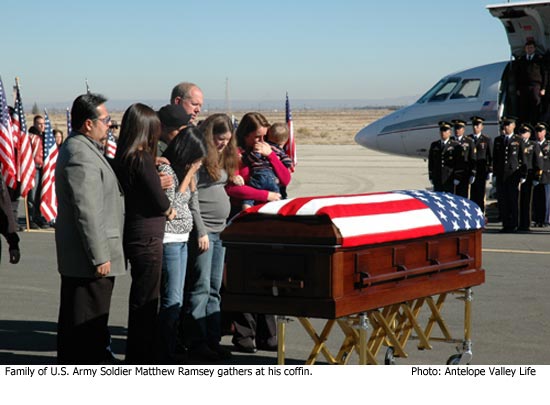
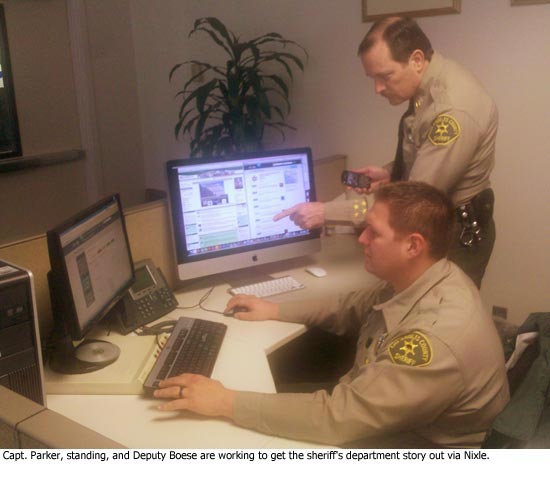
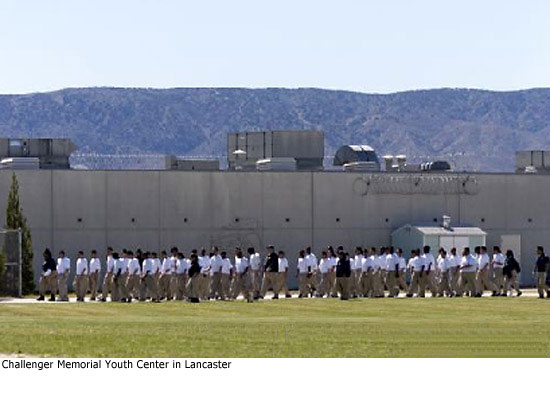
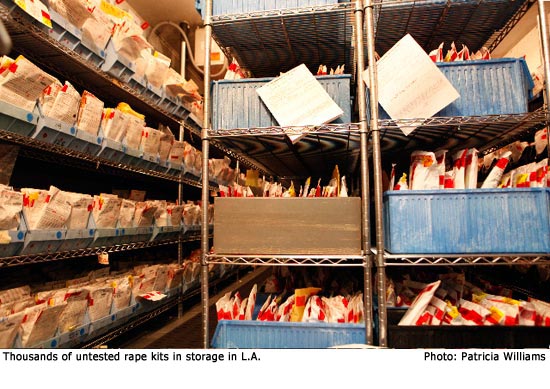
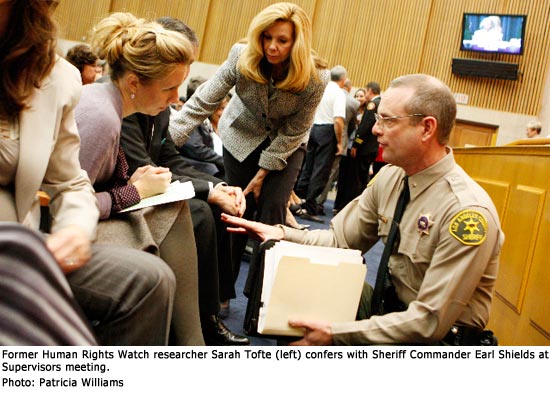







 405 bridge work causes a stink
405 bridge work causes a stink
